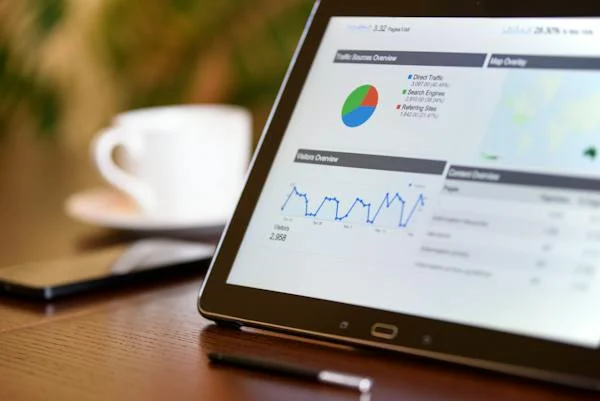This Article has been revised, edited and added to, by Poulomi Chakraborty.
- The Basics: Open Rates vs. Click-Through Rates
- Beyond the Basics: Conversion Rates and Bounce Rates
- Engagement Metrics: Time Spent and Read Rates
- Advanced Metrics: List Growth and Unsubscribe Rates
- ROI and Revenue Metrics
- Engagement Metrics: Understanding Subscriber Interaction
- Customer Retention and Loyalty Metrics
- Deliverability Metrics: Ensuring Your Emails Reach the Inbox
- Conclusion
In the world of digital marketing, email remains a powerful tool for reaching and engaging your audience. However, the true strength of email marketing lies not just in sending out messages but in understanding how those messages perform. To gauge the effectiveness of your email campaigns and ensure they deliver a strong return on investment (ROI), it’s essential to track the right metrics. Knowing which metrics matter can help you refine your strategies, improve engagement, and drive better results. This article will explore the key email marketing metrics you should track, providing detailed insights into how each metric contributes to your overall success.
The Basics: Open Rates vs. Click-Through Rates

Understanding the performance of your email campaigns starts with two fundamental metrics: open rates and click-through rates (CTR). These metrics provide a baseline for assessing how well your emails are capturing the attention of your audience and encouraging them to engage with your content.
Open Rates
Open rates measure the percentage of recipients who open your email. This metric is a crucial indicator of how effective your subject lines and sender names are in grabbing attention. For instance, if you send an email to 1,000 recipients and 200 of them open it, your open rate is 20%. A higher open rate suggests that your subject line was compelling and relevant to your audience.
However, open rates alone do not tell the whole story. An email might be opened but not read or acted upon, which is where CTR comes into play.
Click-Through Rates
Click-through rates measure the percentage of recipients who clicked on one or more links in your email. This metric is crucial for understanding how engaging and relevant your email content is. If you sent the same email to 1,000 recipients and 50 of them clicked on a link, your CTR would be 5%.
Comparing open rates and CTR provides a more comprehensive view of your email’s performance. For example, a high open rate with a low CTR may indicate that while your subject line was effective in getting recipients to open the email, the content did not engage them enough to click through. On the other hand, a moderate open rate but a high CTR suggests that those who opened the email found the content very engaging.
Comparing Open Rates and CTR
Let’s consider two hypothetical email campaigns to illustrate this comparison:
Campaign A: This campaign has a 30% open rate and a 3% CTR. Here, 300 out of 1,000 recipients opened the email, but only 30 clicked on a link.
Campaign B: This campaign has a 20% open rate and a 10% CTR. In this case, 200 out of 1,000 recipients opened the email, but 100 clicked on a link.
At first glance, Campaign A seems more successful because of the higher open rate. However, Campaign B has a much higher CTR, indicating that its content was more engaging for those who opened it. This comparison shows that both metrics are essential for a full understanding of your email’s performance.
Beyond the Basics: Conversion Rates and Bounce Rates
While open rates and CTR provide valuable insights into the immediate engagement with your emails, deeper metrics like conversion rates and bounce rates can give you a better understanding of the overall effectiveness and deliverability of your campaigns.
Conversion Rates
Conversion rates measure the percentage of recipients who completed a desired action after clicking on a link in your email. This could be making a purchase, filling out a form, or downloading a resource. If 20 out of the 50 recipients who clicked a link in your email went on to make a purchase, your conversion rate would be 40%.
Conversion rates are critical for understanding the ROI of your email campaigns. High conversion rates indicate that your emails are not only engaging but also effective in driving recipients to take the desired action.
For example, an e-commerce business might send a promotional email with a 20% discount. A high conversion rate on this email would suggest that the offer was compelling and well-targeted to the audience.
Bounce Rates
Bounce rates measure the percentage of emails that were not successfully delivered to recipients’ inboxes. There are two types of bounces: hard bounces and soft bounces.
Hard bounces occur when an email cannot be delivered due to permanent reasons, such as an invalid email address. Soft bounces happen when an email cannot be delivered temporarily, such as due to a full inbox or server issues.
High bounce rates can negatively impact your sender reputation and reduce the deliverability of future emails. Monitoring bounce rates helps you maintain a clean email list by identifying and removing invalid or problematic addresses. For example, if you notice a high hard bounce rate, it may indicate that your email list needs updating to remove outdated or incorrect email addresses.
Engagement Metrics: Time Spent and Read Rates

Engagement metrics such as the time spent on an email and read rates provide deeper insights into how recipients interact with your emails. These metrics go beyond simple clicks and opens to reveal how engaged your audience is with your content.
Time Spent on Email
Time spent on email measures how long recipients spend reading your email. This metric helps you understand if your content is engaging enough to hold the recipient’s attention. For example, if recipients are spending an average of 10 seconds on your email, it may indicate that the content is not compelling or too long.
Analyzing the time spent on your emails can help you optimize your content length and format. If you find that recipients are not spending enough time on your emails, consider making the content more concise and visually appealing. On the other hand, if recipients are spending a lot of time on your emails, it suggests that the content is engaging and relevant.
Read Rates
Read rates measure the percentage of recipients who read your email compared to those who skim or glance at it. This metric provides a more detailed view of engagement, helping you understand how many recipients are truly engaging with your content.
For example, if 500 out of 1,000 recipients opened your email, and 250 of those read it thoroughly, your read rate would be 50%.
High read rates indicate that your content is not only being opened but also consumed in depth. This suggests that your email is valuable to the recipient, whether it’s through informative content, compelling storytelling, or engaging visuals. Analyzing read rates alongside other metrics can help you refine your content strategy to better meet the needs and interests of your audience.
Advanced Metrics: List Growth and Unsubscribe Rates
While engagement and performance metrics are essential for evaluating individual email campaigns, understanding the health and growth of your overall email list is equally important. Metrics such as list growth rate and unsubscribe rate provide insights into how your audience is evolving over time and how well you are retaining your subscribers.
List Growth Rate
List growth rate measures how quickly your email subscriber list is growing. This metric takes into account new subscribers, unsubscribes, and email bounces. A healthy list growth rate indicates that your email marketing efforts are attracting new subscribers while retaining existing ones.
To calculate your list growth rate, subtract the number of unsubscribes and bounces from the number of new subscribers gained over a specific period, then divide by the total number of subscribers at the beginning of the period.
For example, if you started with 1,000 subscribers, gained 200 new ones, had 50 unsubscribes, and 20 bounces, your net new subscribers would be 130. This results in a list growth rate of 13%.
A positive growth rate is crucial for maintaining the effectiveness of your email marketing campaigns. A declining or stagnant list indicates potential issues with your content, relevance, or targeting strategies.
For example, if your list growth rate is low, you might need to enhance your lead generation tactics, such as offering more valuable content or incentives for signing up.
Unsubscribe Rates
Unsubscribe rates measure the percentage of recipients who choose to opt out of your email list. This metric provides insights into how well your content resonates with your audience and whether you are maintaining their interest over time. A high unsubscribe rate can indicate that your content is not meeting the expectations or needs of your subscribers.
To calculate the unsubscribe rate, divide the number of unsubscribes by the total number of emails delivered, then multiply by 100 to get a percentage. For example, if you sent 1,000 emails and 20 recipients unsubscribed, your unsubscribe rate would be 2%.
Monitoring your unsubscribe rate helps you identify trends and potential issues with your email campaigns. A sudden spike in unsubscribes might signal that your content is no longer relevant or engaging, or that you are sending emails too frequently.
For instance, if you notice a high unsubscribe rate after a particular email campaign, review the content and frequency to identify what may have caused the issue.
Comparing List Growth and Unsubscribe Rates
Comparing list growth rate with unsubscribe rate provides a comprehensive view of your email list health. Ideally, your list growth rate should outpace your unsubscribe rate, indicating a net positive growth. For example, if your list growth rate is 15% and your unsubscribe rate is 2%, it suggests that you are effectively attracting and retaining subscribers.
However, if your unsubscribe rate is close to or higher than your list growth rate, it indicates a need for improvement in your email marketing strategy. This comparison can help you identify areas where you may be losing subscribers and implement strategies to enhance retention.
For instance, focusing on delivering more personalized and relevant content can help reduce unsubscribe rates and improve overall list growth.
Strategies to Improve List Growth and Retention
Improving list growth and retention requires a strategic approach. Offering valuable incentives for new subscribers, such as exclusive content or discounts, can attract more sign-ups. Additionally, optimizing your sign-up forms to make the process easy and quick can increase conversion rates.
To retain subscribers, focus on delivering high-quality, relevant content that meets their needs and interests. Segmenting your email list based on subscriber behavior and preferences allows you to tailor your content more effectively.
For example, if you know that a segment of your audience is interested in product updates, ensure they receive relevant information without overwhelming them with unrelated content.
Regularly engaging with your audience through personalized and interactive emails can also enhance retention. Encouraging feedback and acting on it shows subscribers that you value their opinions, which can foster loyalty and reduce unsubscribe rates.
For example, sending out a survey asking for content preferences and then incorporating those preferences into your emails demonstrates responsiveness and commitment to delivering value.
ROI and Revenue Metrics

Ultimately, the success of your email marketing campaigns is measured by their impact on your bottom line. Return on investment (ROI) and revenue metrics provide a clear picture of the financial benefits generated by your email marketing efforts. Understanding these metrics helps you allocate resources effectively and justify your email marketing strategy to stakeholders.
Calculating ROI
ROI measures the profitability of your email marketing campaigns by comparing the revenue generated to the costs incurred. To calculate ROI, subtract the total cost of your email campaign from the total revenue generated, then divide by the total cost and multiply by 100 to get a percentage. For example, if your email campaign generated $10,000 in revenue and cost $2,000 to execute, your ROI would be 400%.
A high ROI indicates that your email marketing campaigns are effective in driving revenue relative to their cost. Tracking ROI over time helps you identify which campaigns and strategies are most profitable, allowing you to focus your efforts on high-performing tactics.
For example, if you notice that personalized email campaigns consistently deliver high ROI, you might allocate more resources to developing and refining personalized content.
Revenue Per Email
Revenue per email (RPE) measures the average revenue generated by each email sent. This metric provides insights into the effectiveness of your email campaigns in driving sales.
To calculate RPE, divide the total revenue generated by the number of emails sent. For instance, if your campaign generated $5,000 in revenue from 10,000 emails sent, your RPE would be $0.50.
RPE helps you assess the overall effectiveness of your email marketing strategy and compare the performance of different campaigns. For example, if one campaign has a higher RPE than another, it suggests that the content, targeting, or timing of the more successful campaign was more effective in driving sales.
Customer Lifetime Value
Customer lifetime value (CLV) is a critical metric that measures the total revenue a customer is expected to generate over their relationship with your business. Understanding CLV helps you evaluate the long-term impact of your email marketing efforts on customer retention and revenue.
To calculate CLV, multiply the average purchase value by the average purchase frequency rate and the average customer lifespan. For example, if the average purchase value is $50, the purchase frequency is 4 times per year, and the average customer lifespan is 3 years, the CLV would be $600.
Email marketing can significantly influence CLV by nurturing customer relationships and encouraging repeat purchases. For instance, sending personalized recommendations and exclusive offers to loyal customers can increase their purchase frequency and overall lifetime value.
Comparing ROI and Revenue Metrics
Comparing ROI and revenue metrics provides a holistic view of the financial performance of your email marketing campaigns. For example, analyzing ROI alongside RPE can help you understand how efficiently your campaigns generate revenue.
A high ROI with a low RPE might indicate that while the campaign is profitable, there is room for improvement in driving higher revenue per email.
Similarly, comparing CLV with ROI helps you understand the long-term impact of your email marketing efforts. If your campaigns have a high ROI but a low CLV, it suggests that while the campaigns are effective in generating immediate revenue, there may be opportunities to enhance customer retention and lifetime value through more personalized and engaging content.
Strategies to Enhance ROI and Revenue
Enhancing ROI and revenue from email marketing requires a strategic approach that focuses on optimizing every aspect of your campaigns. Personalization is a key factor in driving higher engagement and revenue. By tailoring your content to individual preferences and behaviors, you can increase the relevance and effectiveness of your emails.
Segmentation is another powerful strategy for enhancing ROI and revenue. By dividing your audience into smaller, more targeted segments, you can deliver more personalized content that resonates with each group.
For example, segmenting your list based on purchase history allows you to send tailored product recommendations and promotions that are more likely to drive sales.
A/B testing is essential for continuous improvement. By testing different elements of your emails, such as subject lines, content, and calls to action, you can identify what works best and optimize your campaigns accordingly.
For instance, testing different subject lines can help you determine which ones generate higher open rates, while testing different offers can help you identify what drives the most conversions.
Finally, tracking and analyzing the performance of your email campaigns using advanced analytics tools provides valuable insights into what drives success. By understanding the factors that contribute to high ROI and revenue, you can refine your strategies and allocate resources more effectively.

Engagement Metrics: Understanding Subscriber Interaction
While ROI and revenue metrics provide a clear picture of the financial success of your email campaigns, understanding how subscribers interact with your emails is equally important. Engagement metrics such as click-to-open rates, forward/share rates, and subscriber activity levels offer deeper insights into the effectiveness of your email content and strategies.
Click-to-Open Rates
Click-to-open rate (CTOR) is a crucial metric that measures the effectiveness of your email content once the recipient has opened the email. It is calculated by dividing the number of unique clicks by the number of unique opens and then multiplying by 100 to get a percentage.
For example, if 200 recipients opened your email and 50 of them clicked on a link, your CTOR would be 25%.
CTOR provides a more detailed view of engagement compared to CTR, as it specifically measures the interaction of recipients who have already expressed initial interest by opening the email.
A high CTOR indicates that your email content and calls to action are compelling and relevant, prompting recipients to take further action. If your CTOR is low, it may suggest that your content is not aligning well with your audience’s expectations or interests, despite them being intrigued enough to open the email.
Forward/Share Rates
Forward/share rates measure how often recipients forward your email to others or share it on social media. This metric is an indicator of how valuable and engaging your content is perceived to be by your audience. If recipients find your email content highly valuable, they are more likely to share it with friends, colleagues, or their social media networks.
To calculate the forward/share rate, divide the number of forwards or shares by the total number of emails delivered, then multiply by 100 to get a percentage. For example, if your email was forwarded 20 times out of 1,000 deliveries, your forward rate would be 2%.
A high forward/share rate can amplify your email’s reach beyond your initial subscriber list, potentially attracting new subscribers and customers. It also indicates strong content quality and relevance.
Encouraging sharing by including social media buttons and “forward to a friend” options in your emails can help increase this metric. Additionally, running referral programs or sharing incentives can motivate recipients to forward your emails.
Subscriber Activity Levels
Monitoring subscriber activity levels involves tracking how frequently and consistently your subscribers engage with your emails over time. This metric helps you understand the overall engagement trends and identify active, semi-active, and inactive subscribers.
Active subscribers regularly open and click on your emails, indicating strong interest and engagement. Semi-active subscribers engage sporadically, while inactive subscribers rarely or never engage. Understanding these activity levels allows you to tailor your re-engagement strategies accordingly.
For example, you might create a targeted re-engagement campaign for inactive subscribers, offering them a special discount or exclusive content to reignite their interest. Similarly, you can reward active subscribers with loyalty programs or personalized recommendations to maintain their engagement.
Comparing Engagement Metrics
Comparing different engagement metrics provides a comprehensive understanding of how subscribers interact with your emails. For instance, if you have a high open rate but a low CTOR, it suggests that while your subject lines are effective, the email content may not be as compelling.
On the other hand, a high CTOR with low forward/share rates might indicate that while your content is engaging, it lacks the viral appeal to be shared widely.
Analyzing these metrics together helps identify strengths and weaknesses in your email strategy. For example, if subscriber activity levels show a high number of inactive subscribers, it may indicate a need to refresh your content or segmentation strategies.
By addressing these issues, you can improve overall engagement and the effectiveness of your campaigns.
Strategies to Enhance Engagement

Enhancing engagement requires a strategic approach that focuses on delivering value and relevance to your audience. Personalization and segmentation are key tactics for increasing engagement. By tailoring your content to meet the specific needs and interests of different subscriber segments, you can create more relevant and engaging emails.
Interactive content can also significantly boost engagement. Incorporating elements such as quizzes, polls, and videos encourages recipients to interact with your emails, making the experience more dynamic and memorable. For example, an interactive quiz that helps recipients find the best product for their needs can increase both engagement and conversions.
A/B testing is essential for optimizing engagement. By testing different versions of your emails, you can identify which content, design, and calls to action resonate most with your audience. For example, testing different subject lines can help improve open rates, while testing different content formats can enhance click-through rates.
Feedback is another valuable tool for enhancing engagement. Encourage subscribers to share their opinions and preferences, and use this feedback to refine your content and strategies. For example, sending a survey asking subscribers what type of content they prefer can provide insights that help you tailor future emails more effectively.
Regularly analyzing engagement metrics and adapting your strategies based on these insights ensures that your email campaigns remain relevant and effective. By focusing on delivering value and fostering interaction, you can build stronger relationships with your subscribers and drive better results.
Customer Retention and Loyalty Metrics
In addition to measuring engagement and financial success, understanding the impact of your email campaigns on customer retention and loyalty is crucial. Metrics such as repeat purchase rate, customer retention rate, and Net Promoter Score (NPS) provide insights into how well your email marketing efforts are fostering long-term customer relationships.
Repeat Purchase Rate
Repeat purchase rate measures the percentage of customers who make multiple purchases over a specific period. This metric is an indicator of customer loyalty and satisfaction, as repeat customers are more likely to have positive experiences with your brand.
To calculate the repeat purchase rate, divide the number of repeat customers by the total number of customers, then multiply by 100 to get a percentage. For example, if 150 out of 500 customers made multiple purchases, your repeat purchase rate would be 30%.
Email marketing plays a significant role in driving repeat purchases by nurturing customer relationships and keeping your brand top-of-mind. Personalized recommendations, exclusive offers, and loyalty programs delivered through email can encourage customers to make repeat purchases.
For instance, sending personalized product recommendations based on past purchases can increase the likelihood of additional sales.
Customer Retention Rate
Customer retention rate measures the percentage of customers who continue to do business with your brand over a specific period. This metric is essential for understanding how well your email marketing efforts are retaining customers and building long-term relationships.
To calculate the customer retention rate, subtract the number of customers lost during a period from the total number of customers at the start of the period, divide by the total number of customers at the start, and multiply by 100 to get a percentage.
For example, if you started with 1,000 customers, lost 100, and ended with 1,200 (including new customers), your retention rate would be 90%.
High retention rates indicate that your email campaigns are effective in maintaining customer engagement and satisfaction. Retention-focused emails, such as loyalty program updates, re-engagement campaigns, and personalized content, can help keep customers engaged.
For example, a re-engagement campaign offering a special discount to customers who haven’t made a purchase in a while can help bring them back.
Net Promoter Score (NPS)
Net Promoter Score (NPS) is a metric that measures customer satisfaction and loyalty by asking customers how likely they are to recommend your brand to others.
Customers respond on a scale from 0 to 10, with scores of 9-10 indicating promoters, 7-8 indicating passives, and 0-6 indicating detractors. To calculate NPS, subtract the percentage of detractors from the percentage of promoters.
Email marketing can influence NPS by delivering exceptional value and experiences that encourage customers to become promoters. For example, sending emails that highlight customer success stories, share valuable tips and resources, and offer exclusive access to new products can enhance customer satisfaction and loyalty.
Comparing Retention and Loyalty Metrics
Comparing retention and loyalty metrics provides a comprehensive view of how well your email marketing efforts are building long-term customer relationships. For instance, analyzing repeat purchase rates alongside customer retention rates can help identify trends and opportunities for improvement.
If your repeat purchase rate is high but your retention rate is low, it may indicate that while customers are making multiple purchases initially, they are not staying loyal over the long term.
Similarly, comparing NPS with other retention metrics can provide insights into customer satisfaction and loyalty. A high NPS alongside high retention and repeat purchase rates suggests that your email campaigns are effectively fostering positive customer relationships.
On the other hand, if your NPS is low despite high repeat purchase rates, it may indicate underlying issues with customer satisfaction that need to be addressed.
Strategies to Enhance Retention and Loyalty
Enhancing customer retention and loyalty through email marketing requires a strategic approach focused on delivering consistent value and building strong relationships. Personalization is key to retaining customers and encouraging repeat purchases. Tailoring your emails to individual preferences and behaviors ensures that your content remains relevant and engaging.
Segmentation is another effective strategy for enhancing retention and loyalty. By segmenting your email list based on customer behavior, preferences, and purchase history, you can deliver more targeted and personalized content.
For example, creating segments for loyal customers, new customers, and at-risk customers allows you to tailor your messages to meet their specific needs.
Loyalty programs are powerful tools for fostering long-term relationships. Regularly updating customers on their loyalty status, rewards, and exclusive offers through email can keep them engaged and motivated to continue doing business with your brand.
For instance, sending a monthly loyalty program update with personalized offers and rewards can enhance customer satisfaction and loyalty.
Re-engagement campaigns are essential for retaining at-risk customers. Identifying customers who have not engaged with your emails or made a purchase in a while and sending targeted re-engagement emails with special offers or personalized content can help win them back. For example, a re-engagement email offering a discount on a customer’s favorite product can encourage them to return.
By focusing on retention and loyalty metrics and implementing targeted strategies, you can build stronger customer relationships and drive long-term success with your email marketing efforts.
Deliverability Metrics: Ensuring Your Emails Reach the Inbox

Deliverability metrics are critical for understanding whether your emails are actually reaching your subscribers’ inboxes. High deliverability rates ensure that your messages are seen by your audience, which is the first step towards engagement and conversion. By monitoring and optimizing deliverability metrics, you can improve the effectiveness of your email marketing campaigns.
Delivery Rate
The delivery rate measures the percentage of emails that were successfully delivered to recipients’ email servers. It is calculated by dividing the number of emails delivered by the total number of emails sent, then multiplying by 100 to get a percentage. For example, if you sent 1,000 emails and 950 were successfully delivered, your delivery rate would be 95%.
A high delivery rate indicates that your email server is recognized as trustworthy by recipient servers, and your emails are not being blocked or filtered out. Factors that affect delivery rates include email list quality, sender reputation, and the use of spam triggers in your content.
Ensuring a high delivery rate involves maintaining a clean email list by regularly removing invalid or inactive addresses and avoiding practices that could harm your sender reputation, such as sending emails to purchased lists or using misleading subject lines.
Inbox Placement Rate
Inbox placement rate goes a step further than delivery rate by measuring the percentage of delivered emails that actually land in the recipients’ primary inbox, rather than in spam or junk folders. This metric is crucial because even if your emails are delivered, they won’t be effective if they are not seen by your audience.
To improve your inbox placement rate, focus on maintaining a good sender reputation, which involves consistent sending practices, avoiding spammy content, and encouraging recipient engagement.
Monitoring feedback loops, setting up proper authentication protocols (such as SPF, DKIM, and DMARC), and regularly testing your emails for spam triggers can help ensure that your emails reach the inbox.
Spam Complaint Rate
Spam complaint rate measures the percentage of recipients who mark your email as spam. This metric is calculated by dividing the number of spam complaints by the total number of emails delivered, then multiplying by 100 to get a percentage. For example, if 5 out of 1,000 delivered emails were marked as spam, your spam complaint rate would be 0.5%.
A high spam complaint rate can severely damage your sender reputation and affect your future deliverability. To minimize spam complaints, ensure that your email content is relevant and valuable to your audience.
Clear opt-out options and respecting unsubscribe requests promptly can also help reduce spam complaints. Monitoring feedback from recipients and making necessary adjustments to your email strategy based on this feedback is crucial for maintaining a low spam complaint rate.
Bounce Rate
Bounce rate, as mentioned earlier, measures the percentage of emails that were not successfully delivered. It is divided into hard bounces and soft bounces. Hard bounces occur when there is a permanent issue, such as an invalid email address, while soft bounces are temporary, such as a full inbox or server issues.
To manage bounce rates effectively, regularly clean your email list by removing addresses that consistently hard bounce. Implementing double opt-in during the subscription process ensures that the email addresses you collect are valid and reduces the likelihood of bounces.
Monitoring soft bounces can help identify temporary issues that may be resolved over time, but repeated soft bounces should eventually be treated as hard bounces and removed from your list.
Engagement and Sender Reputation
Engagement metrics like open rates and CTR also play a role in deliverability. Email service providers (ESPs) consider engagement when determining whether to deliver your emails to the inbox or the spam folder. High engagement rates indicate to ESPs that recipients find your emails valuable, improving your sender reputation and deliverability.
Conversely, low engagement rates can signal to ESPs that your emails are not relevant to recipients, increasing the likelihood of being marked as spam. Therefore, maintaining high engagement through relevant, personalized content is essential for improving both deliverability and overall campaign effectiveness.
Improving Deliverability Through Best Practices
Improving email deliverability involves a combination of technical measures, content strategies, and list management practices. Here are some key steps:
- Authenticate Your Emails: Setting up SPF, DKIM, and DMARC authentication protocols helps verify your emails’ legitimacy and reduces the chances of them being marked as spam.
- Maintain a Clean Email List: Regularly clean your email list by removing invalid, inactive, or unengaged addresses. This improves delivery rates and engagement metrics.
- Monitor Sender Reputation: Use tools like Sender Score to monitor your sender reputation and identify any issues that need addressing. A high sender reputation improves deliverability.
- Create Relevant Content: Focus on creating valuable, relevant, and engaging content that resonates with your audience. Personalized content tailored to recipient preferences can significantly improve engagement metrics.
- Encourage Engagement: Design your emails to encourage recipient interaction, such as clicking on links, sharing content, and responding to surveys. Higher engagement signals to ESPs that your emails are valuable.
- Test and Optimize: Regularly test your emails for spam triggers and deliverability issues using tools like Litmus or Email on Acid. Optimize your content and sending practices based on the test results to improve deliverability.
By implementing these best practices, you can enhance your email deliverability, ensuring that your messages reach the inbox and achieve maximum impact.
Conclusion
Tracking the right email marketing metrics is essential for understanding and improving the performance of your campaigns. From basic metrics like open rates and click-through rates to advanced metrics such as conversion rates, customer retention rates, and deliverability metrics, each provides valuable insights into different aspects of your email marketing efforts.
By analyzing these metrics, comparing them, and implementing targeted strategies based on the insights gained, you can enhance engagement, drive better results, and achieve a higher return on investment. Continuous monitoring and optimization ensure that your email campaigns remain effective, relevant, and impactful, helping you build stronger relationships with your audience and achieve long-term success.
Read Next





















